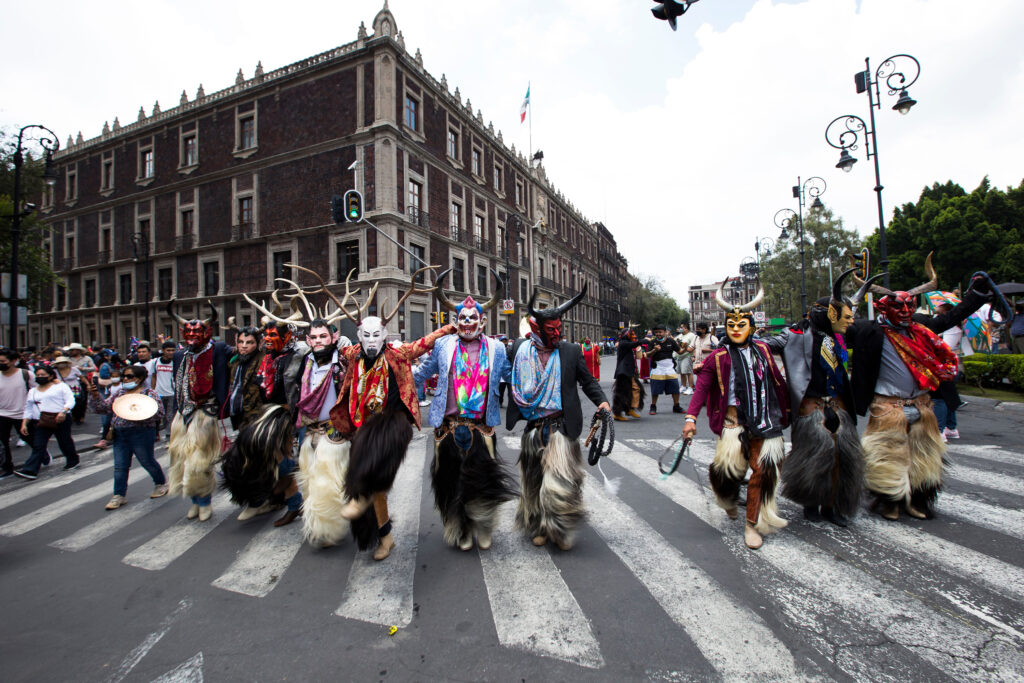Why Identity is Failing—and Can’t be Abandoned

It would be convenient to start this essay with a clear definition of identity politics—a dictionary-worthy entry, presented like a compact and neat truth. But identity politics resists tidy definitions, and that’s because it was never meant to have one. It emerged not from a theory but from a condition: People excluded from public life began to make demands based on their sense of exclusion.
I often hear that by now identity politics has been exhausted. Because it is too narrow. Too divisive. Too easy to co-opt. It is all tactics and no strategy, all feeling and no horizon. Too particular to a Western sensibility. In contemporary political discourse, identity politics has become a placeholder and an easy scapegoat: For some on the right, it feels like a politics of pettiness and vengeance; some on the left dismiss it as a diversity performance that leaves deeper structures of inequality intact. I don’t think this is by accident. What if this sense of exhaustion is a sign not that identity politics has failed but that it has been asked to do too much? Or maybe that we are disappointed with its successes because those, although steady, are never comprehensive or definitive?
This essay is neither a defense nor a criticism of identity politics. It is a reckoning with what identity politics—as a term and a practice—has borne: liberalism’s broken promises, a nation’s conditions for belonging, the perverse costs of formal recognition. Let me illustrate this point with three historical examples: the emancipation of Jews in 18th–19th century Europe, the various waves of the feminist movement, and the treatment of Indigenous and Afro-descendant peoples in modern Mexico. These examples aren’t bound by any single story, but together they reveal the burdens that identity politics has shouldered, the limits it exposes, and the horizons it might still open.
Identity and the Left
The notion of citizenship that emerged in Europe in the 18th and 19th centuries was tied to a universalist ideal that masked particular exclusions. The figure of the citizen was imagined as abstract, yet implicitly it was white, Christian, male, and, often, propertied. In France, the 1789 Declaration of the Rights of Man in theory granted equal rights to all individuals. In fact, its universality was conditional: The emancipation of Jews, for example, hinged on their renouncing their collective identities and traditions. In 1791, the National Assembly declared Jews to be French citizens but only as individuals, not as a people. Being Jewish was admissible as a private faith, not as a public or political identity.
In Germany, the process was slower and more fractured. Emancipation came piecemeal across the German states, with some granting rights only to Jews deemed to be useful or educated. Full emancipation was not achieved until the country’s unification in 1871. And even then, it had a price: assimilation into German bourgeois norms, cultural conformity, the abandonment of communal autonomy. Jews who resisted these terms were considered ungrateful, suspect, or dangerous. The rise, later, of modern antisemitism was in part a backlash against them—against Jews who had entered society not in the way that the majority was comfortable with.
As the European state’s liberal fictions about equality became clear, socialism and communism arose, calling for collective emancipation, the end of exploitation, and a world without classes. And yet identity posed a problem to those movements, too. They often regarded identity-based demands with suspicion, as distractions from the class struggle, as bourgeois diversions, or, worse, as threats to their unity.
And so it was that many Jews found themselves caught between a state that offered them only conditional inclusion and a revolutionary left that mistrusted their particularity. Any claims based on a specific history, culture, religion, or on sex, race, ability were seen as secondary at best and sometimes even as reactionary. The universal subject of socialist politics—much like the universal subject of liberal rights—had to be unmarked and, tacitly, majoritarian.
In his 1844 essay On the Jewish Question, Marx distinguished political emancipation (being granted rights within the liberal state) from human emancipation (a deeper transformation of the conditions that produce inequality and alienation). He argued that political rights only privatized difference without addressing material dispossession. Yet even as he exposed the limits of recognition under liberalism, Marx missed how identity could be the medium through which exclusion is named and redress is demanded. He missed this in part by reproducing an antisemitic trope: By equating Jewishness with money-worship, self-interest, and rootless circulation— conflating it with the logic of capital—he overlooked the historical exclusion and persecution that had forged those stereotypes and now underpinned Jews’ demand for political rights.
Identity politics, then, is not a detour from economic or structural struggle; often, it is the expression of that struggle. It isn’t just a call for inclusion; it’s a call for repair—not in the sense of reparation or final resolution, but as reckoning. A reckoning with histories of dispossession and with the uneven ways in which power continues to shape who counts.
The uneasy relationship between identity and leftist politics resurfaced vividly in the 1970s, with the Combahee River Collective, a group of Black lesbians active in socialist and feminist circles. They argued that the personal was political because no politics had accounted for their lives. And they waved the flag of identity politics not only because they were being denied who they were but because of how their experiences (lifestyles, desires, and shared histories all ignored or worse) represented forms of harm that had not yet been addressed.
In the case of the Combahee River Collective, too, identity was not a claim to separateness but a response to exclusion. In male-dominated Black liberation movements, gender and sexuality were sidelined; whiteness structured the assumptions of mainstream feminism; in socialist organizing, race and other bodily differences were consistently seen as secondary to class. Much like European Jews could obtain rights only if their difference was denied, the difference of Black lesbians had to be minimized (or compartmentalized) for other movements to feel coherent. In their hands, identity politics was not a politics of fragmentation but an attempt to consider together wrongs that others insisted be addressed separately. (Some now call this “intersectionality,” but as Jennifer C. Nash, a professor of gender, sexuality, and feminist studies, has shown, the contemporary institutionalization of intersectionality as a framework of discrete, additive identities that can be easily included in bureaucratic logics risks ultimately flattening the radical critique that the Collective offered.) Identity politics emerged within movements, not outside them—and to this day it is the mark of their internal fractures, evidence of what they could not contain. In both the case of Jews’ rights in 18th–19th century Europe and the case of the Combahee River Collective, identity was not the problem: All it did was to express the limits of the promise of universal liberation.
Feminism, the Restless Identity
The feminist movement is often described as having occurred in waves. First wave: legal rights. Second wave: economic and sexual freedoms. Third wave: the recognition of other differences within sexual difference. Fourth, fifth, sixth waves: the fractalizing of womanhood, or the undoing of the idea that womanhood is a single thing. But what are waves except flows that rise and crash, and rise and crash again? Demands for legal rights, economic equality, sexual liberation, etc. have existed at each and every moment of the movement—all are a part of the fraught history of an identity politics.
And each of these waves has had its undertow. As feminists have worked to expand the meaning of “woman,” they have also discovered the harms caused in presuming the term’s clarity, its unity. “Woman” should not mean a person without the cognitive capacity to choose who governs her; “woman” should not mean an unpaid laborer; “woman” should not mean object of desire. All agreed. But can the gender of a formerly enslaved woman in the United States be compared to that of a middle-class woman in 1950s France? Can either explain the life of an Indigenous woman in northern Chile? Black and Indigenous feminists in the Americas have long pointed out these epistemic differences—and the violence inherent in ignoring them. The category “woman,” like that of “citizen,” is implicitly forged in the image of a particular subject, and so when it is treated as universal, it often reproduces the exclusions it set out to overcome. Anyone who does not readily fit in is either subsumed or erased.
The historian Joan W. Scott famously defined gender as a historical category in her 1986 essay “Gender: A Useful Category of Historical Analysis”—a way of signifying relationships of power through the body, language, and institutions. She urged scholars to move beyond descriptive accounts of what gender is toward an analysis of how gender operates: to see it in all its contextual specificity and be mindful that it is being produced by, and is itself producing, contested symbolic and material systems rather than pre-given truths.
But even this expansive framework meets its limits when confronted with the afterlife of slavery, the profound injury marking Black identity in the United States and other African diasporas. Identity is not just how history positions people; it is what history imprints on them. On this point, I have found the literary critic Hortense Spillers incredibly insightful. In her landmark 1987 essay “Mama’s Baby, Papa’s Maybe: An American Grammar Book,” she argued that before the very category “woman” could be claimed, it had to be wrested from gendered language—and a Black woman’s body had to be wrested from the hold of property.
Spillers distinguishes “flesh” and “body” to show how slavery reduced the Black person to even less than a gendered or social subject: to raw meat—stripped of protection, kinship, and narrative. Flesh, for Spillers, is not just the body before language; it is a body broken by violence and made into property. But then, too, it is in that very understanding that lies the potential for change: The flesh calls for something beyond the dominant grammar of race and gender; it calls not for freedom but for rupture, and for the creation of a new kind of meaning. The point is not to eradicate identity, but to radically reconfigure the norms and codes of how identity is constructed.
Still, the demand for a coherent feminist subject persists. When women are denied rights as women, they are often compelled to organize as women. But insisting on legibility in this way can reassert the very exclusions that feminism once sought to undo: Trans women, for instance, are seen in some feminist politics as threats to the very category of womanhood. Black, Indigenous, and trans feminists, though, have shown that coherence often is a luxury afforded only to those whose lives were already considered normative. And even lives that are considered normative experience fragmentary or contradictory identities. Coherence is a luxury but also a limitation. It is inherited, improvised, or performed; experienced collectively and in private; it is tangled. The cacophony of difference that had prompted feminism to push back against patriarchy itself became a problem to solve rather than a condition to hold.
The State Recognizes You (Sort Of)
And now for contemporary Mexico, where two seemingly unrelated episodes illustrate how identity politics can be a means of confronting the afterlives of colonialism.
First, following the 1994 Zapatista uprising in Chiapas, the federal government granted municipalities in Oaxaca the right to govern through usos y costumbres (customary law). Second, in 2020, Afro-Mexicans, or Afro-descendants, were officially allowed to identify as such in the national census for the first time: Some 2,576,213 people did. Both usos y costumbres and the inclusion of Afro-Mexicans in the census were forms of state recognition that marginalized communities had long demanded. And yet both raise unsettling questions about the terms and the consequences of being seen that way.
The Zapatista uprising was a rebellion against economic exploitation, prompted by concerns that the federal Mexican state’s move toward a free-trade agreement with North America would harm impoverished and Indigenous communities. It was also, as the anthropologists George Collier and Elizabeth Lowery Quaratiello argue, a profoundly Indigenous response to centuries of dispossession—and it redefined political struggle in terms of territory, memory, and, importantly, dignity. Building on this, feminist scholars like Sylvia Marcos have shown how the movement’s internal and external politics were shaped by gender as well, drawing directly from Zapatista communiqués and declarations.
At the same time, as the Bolivian sociologist Silvia Rivera Cusicanqui has argued, indigeneity is not just a reclaimed identity: It was also a colonial invention designed to manage populations and extract labor. In Mexico, this process intensified after independence (1810–1821), as the nation-state was being formed. President Benito Juárez’s effort to implement the separation of State and Church during his liberal reform period (1855–1863) expropriated all communal goods—including indigenous lands. And in 1895, the administration of Porfirio Díaz deployed the first national census, which recognized native populations but also consolidated them into a single category: the mestizo Mexican, a fusion of Spanish colonizer and Indigenous colonized. That singular vision of national belonging absorbed some identities while erasing others.
Even today, the term “Indigenous” can function more as a political strategy than a fixed identity. Communities such as the Otomies or the Mayans do not always refer to themselves as Indigenous—except when doing so translates into claims to land, solidarity, or resistance to the Mexican state or transnational enterprises.
Consider the history of usos y costumbres. The Spanish Crown had selectively recognized Indigenous customary law in order to rule indirectly, but post-independence Mexico moved toward a homogenizing legal regime. It wasn’t until the 1990s—under pressure from international notions of multiculturalism and internal Indigenous mobilizations (especially the Zapatista armed uprising)—that usos y costumbres was included in the Mexican Constitution. Indigenous peoples’ right to self-determination was affirmed, including the right to elect local authorities according to traditional norms. But as the political scientist Allyson Benton has shown in her analysis of post-Zapatista Oaxaca, that legal recognition has operated less as a means of decolonization than a form of containment: Political parties often exploit it to neutralize their opponents and consolidate power—influencing local elections, co-opting traditional leaders, manipulating community norms, and selecting where usos y costumbres should apply at all.
By institutionalizing some forms of Indigenous governance, the state corrals other, more radical, demands—for redistribution, autonomy, epistemic transformation—into the safer territory of cultural rights. Tradition is not liberated; it is bracketed and framed. Formal recognition, rather than empowering communities, can narrow their chances at political reinvention and experimentation. Glen Coulthard, a scholar of Indigenous studies and political science, argued in his 2014 book Red Skin, White Masks that recognition often functions as a substitute for justice. Instead of confronting the foundational violence of settler colonialism, liberal states offer symbolic inclusion. Self-determination is domesticated and regulated.
And yet no recognition, and no form of control, is total. And no identity politics is ever purely symbolic. For example, the African presence in Mexico was systematically erased or obscured for centuries, especially through the national myth of mestizaje. The legacy of enslavement, resistance, and African immigration was not just forgotten; it was actively disavowed. The first national census tried to occlude that history; it named to frame. But the simple fact of counting people who were seeking identitarian recognition pierced a previous silence and opened a door. Identity politics may not resolve contradictions but it can make them visible and so contestable. Being counted while being contained creates friction, and from that, new possibilities emerge.

Not Possession but Passage
What is identity, really, if not a construct always in crisis? It is a language we inherit and reshape, a form imposed and reclaimed, a wound and a weave. Identity can dissolve in an instant and persist across generations. It lives in the flesh and in the name; in the rituals and the songs we don’t remember ever learning. And it carries even more than it holds: ancestral weight, imposed silence, collective memory. What would it mean to approach identity not as a problem that needs solving, but as something to consider with care and to critique in the knowledge that it is too much and not enough?
Identity politics is not exhausted, no, but it does place a disproportionate burden on the people it tries to represent. You must narrate your pain. You must do so clearly. You must perform your intelligibility—or risk being cast out of the visible, the speakable, the political. These demands are made ostensibly in the name of empowerment, but often they re-inscribe the very conditions that identity politics seeks to undo. Many of us do not live according to clean narrative arcs: We live in fragments, with interlocking histories, contradictory inheritances, and generational wounds. In fact, I think a majority of us, at one time or another, live as exiles within our own categories.
Critics of identity politics often argue that it detracts from “real” economic and political struggles—as if the demand to be named were a distraction from the demand to live. But identity politics, at its core, is not just about symbols; it is about power. It is about who is remembered, who is heard—and who is protected, paid, or punished. The experience of belonging is also shaped through institutions; memory pervades land, lineage, law. Identity is one of the conditions of material redistribution.
Fred Moten’s writings confront those conditions powerfully. His commitment—what he calls “consent to not be a single being”—turns his poetry into a practice of living in relation to others without collapsing into sameness. His work does not discard identity; it challenges its fixity, placing it within and across histories. It affirms that one may inhabit a position without being defined by it and that our affiliations can be both unfinished and real. Identity is not a possession but a passage: through time, through grief, through others.
I am less interested in celebrating incoherence than in staying with it. What if we stopped demanding that people arrive at politics with a unified self? What if identity politics did not mean being someone but meant standing with others and sharing with them the tension of not being one? What if the power that identity politics seeks was not purity or unity but the ability to remain vulnerable in messy and unresolvable struggles?
A Humanism of Friction
The world today is not post-identity. It is post-coherence. The old subjects have frayed: the individual, the citizen, even the people. What remains are entanglements. Half-named wounds. Provisional alliances. The desire for clarity has not vanished, but its forms no longer hold.
We do not need another universal; we need a way of living together that does not require sameness. This is a humanism not of shared essence, but of shared difficulty. This understanding of political identity is not new, but I want to reclaim it for what we call identity politics. And I want to make the case for relations premised on identity as the base for friction not fusion. This is not a call to abandon identity politics. It is a call to let it breathe and loosen its borders.
The world demands clarity, yet we live in contradiction. This is not our failing; it is our condition. I must admit that I, too, have a romanticism. So does liberalism, and socialism, and nationalism—each animated by the longing for freedom, justice, belonging. The pulse of politics means yearning for what might be possible even if it is not yet real. Some find hope in the past, others in the future, others still in a parallel world. Forget fixed enemies and loyal friends, I want to bet on porousness—on identity being agonic. I wager that difference need not be eradicated in order for solidarity to be forged. This is difficult, as it is supposed to be.
To be porous is to admit the touch of the world—not as something that one survives, but as something that also reaches back. No identity is ever fully ours, and yet none is fully foreign. Naming ourselves in ways that others can grasp is part of what politics requires. And yet there is no fully legible person, and there is no complete recognition. There are only moments of contact.
Identity politics, in particular, is the place where held anger lives on—it demands repair in the face of irreparable harm: marked bodies and mapped pain. It also stands for the difficulty of holding together histories that cannot easily coexist, because some communities have been directly implicated in the injury of others. Sometimes the pain is mutual; more often, it is uneven. Friction is not evenly distributed. Still, we live amid the recursive noise of both inheritance and interruption, and if politics is anything, it is the attempt to move within that noise without silencing it.
Tessy Schlosser is a political theorist and director general of the Mexican Jewish Documentation and Research Center (CDIJUM) in Mexico City.


